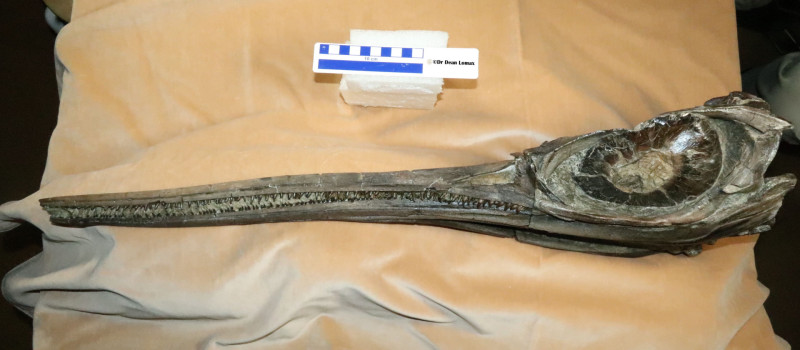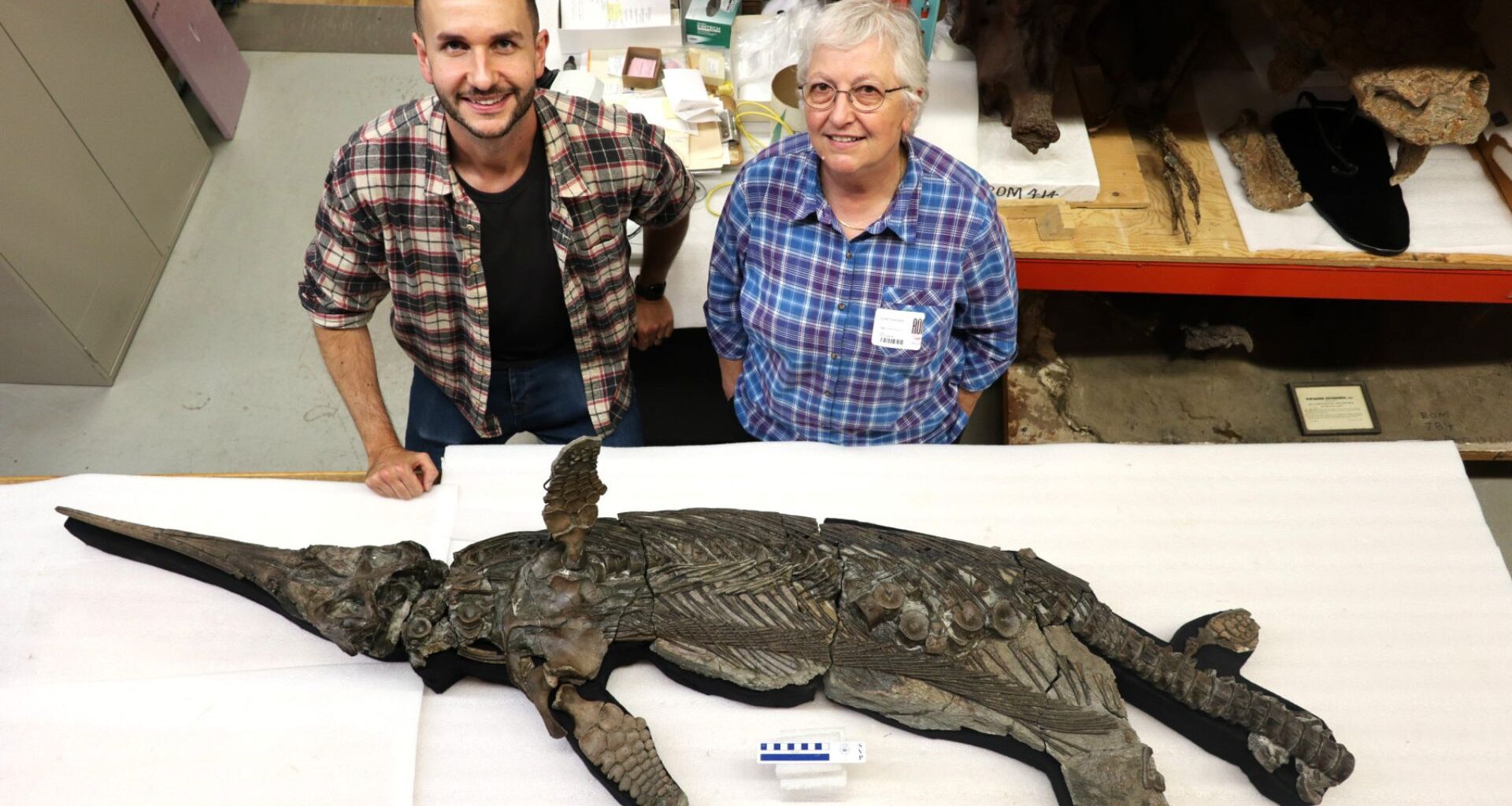A new species of ancient marine reptile has been identified from exceptionally well-preserved fossilized remains unearthed in the UK.
The rare fossil belongs to an ichthyosaur group that once dominated the ancient oceans and lived alongside dinosaurs.
The dolphin-sized marine creature has been named Xiphodracon goldencapensis, or the “Sword Dragon of Dorset.”
This ichthyosaur lived about 184 million years ago (early Jurassic), an era from which its fossils are exceptionally rare.
Interestingly, the near-complete skeleton preserved in a 3D state is the only known example of its kind.
An international team of palaeontologists, led by ichthyosaur expert Dr Dean Lomax from the University of Manchester, described the findings on October 10.
 Large, sword-like snout of the marine creature. The University of Manchester
Large, sword-like snout of the marine creature. The University of Manchester
Skull with huge eye socket
Unearthed in 2001 from the Jurassic Coast in Dorset, the Royal Ontario Museum, Canada, soon acquired the skeleton.
Although it joined the museum’s extensive ichthyosaur collection, it remained unstudied until this recent research.
Dr. Lomax first encountered the skeleton in 2016 and immediately recognized the fossil as something “unusual.”
Extensive analysis revealed this marine predator was about three metres long (roughly 9 feet) in real life.
The specimen’s skull is preserved, revealing its huge eye socket and elongated, sword-like snout.
It exhibits unique features, including a strange and unique bone around the nostril (a lacrimal) with prong-like bony structures — something never before observed in any ichthyosaur.
The reptile would have dined on fish and squid. Traces of what may be its last meal were preserved.
Moreover, the skeleton shows evidence of a dangerous life in the ancient seas of Britain.
The malformed limb bones and teeth suggest the aquatic animal suffered from serious injury or disease during its lifetime.
“The skull appears to have been bitten by a large predator – likely another much larger species of ichthyosaur- giving us a cause of death for this individual. Life in the Mesozoic oceans was a dangerous prospect,” said Dr Erin Maxwell, a co-author from the State Museum of Natural History Stuttgart.
Filling the evolutionary gap
The highly adapted ichthyosaurs inhabited the ancient oceans throughout the Mesozoic Era (250 to 90 million years ago). Thousands of marine reptile fossils have been unearthed from the UK’s Jurassic Coast.
The discovery of Xiphodracon is important as it is the first new genus of an Early Jurassic ichthyosaur described from the coast in over 100 years.
The new specimen is a vital piece of evidence as ichthyosaurs from the Pliensbachian period (193–184 million years ago) are incredibly rare.
The researchers describe it as the “world’s most complete prehistoric reptile from the Pliensbachian period.”
This valuable discovery could help understand a less known phase in ichthyosaur evolution, defined by major faunal turnover and extinction events.
“I knew it was unusual, but I did not expect it to play such a pivotal role in helping to fill a gap in our understanding of a complex faunal turnover during the Pliensbachian,” said Dr Lomax.
“This time is pretty crucial for ichthyosaurs as several families went extinct and new families emerged, yet Xiphodracon is something you might call a “missing piece of the ichthyosaur puzzle,” Lomax added.
Its discovery suggests the faunal turnover occurred much earlier than previously expected. The reptile shows a closer evolutionary link to species found later in the Early Jurassic (specifically, the Toarcian age).

